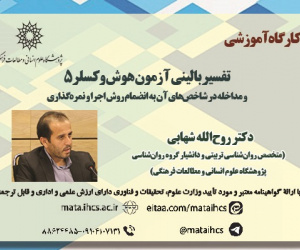شناسایی عوامل تأثیرگذار بر شکل گیری و رشد سکونتگاه های غیر رسمی در شهر مشهد (مورد مطالعه: پهنه های سیدی، خواجه ربیع، قلعه ساختمان و جاده قدیم قوچان) (مقاله علمی وزارت علوم)
درجه علمی: نشریه علمی (وزارت علوم)
آرشیو
چکیده
شکل گیری و رشد سکونتگاه های غیر رسمی، یکی از مهمترین دغدغه های مدیریت شهری در ایران و کشورهای در حال توسعه است. کلان شهر مشهد، بزرگترین مرکز جمعیتی و مقصد بسیاری از مهاجرت ها در نیمه شرقی کشور می باشد. این پژوهش به شناخت عوامل تأثیرگذار بر شکل گیری و رشد سکونتگاه های غیر رسمی در کلان شهر مشهد پرداخته است. بدین منظور چهار پهنه: سیدی، جاده قدیم قوچان، خواجه ربیع و قلعه ساختمان انتخاب شد و مورد مطالعه قرارگرفت. نتایج پژوهش نشان داد که عامل مدیریت کلان و محلی با 9/20 درصد از واریانس کل، بیشترین سهم را در شکل گیری و رشد سکونتگاه های غیر رسمی مشهد به خود اختصاص داده است. دسترسی به خدمات رفاهی و اشتغال با 9/15 درصد، شرایط محیط طبیعی و مسکونی محل سکونت قبلی با 13 درصد، عامل ارتباطات فضایی و کالبدی با 9/10 درصد و روابط قومی و اجتماعی با 8/9 درصد، از دیگر عوامل مهم مؤثر بر شکل گیری و رشد سکونتگاه های غیر رسمی مشهد می باشند و این 5 عامل در مجموع، 6/70 درصد از واریانس کل را تشکیل می دهند. علاوه بر این؛ میانگین وزنی شاخص های رشد سریع تر محدوده ها از برنامه (69/4)، ضعف مدیریت شهری (55/4)، ناکارآمدی برنامه های دولت (41/4)، بیکاری (38/4)، دستیابی به درآمد بیشتر (32/4) و ارزانی زمین و اجاره بها (25/4)، به عنوان مهم ترین شاخص های تأثیرگذار در ذیل عوامل شکل گیری و رشد سکونتگاه های غیر رسمی مشهد شناسایی شده اند. لزوم توجه همزمان به مسائل در مبدأ و مقصد مهاجرت، با تأکید بر دو عامل مدیریت و اقتصاد در کنترل رشد سکونتگاه های غیر رسمی بیار کلیدی است. ایجاد پایداری اقتصادی از طریق فرصت های شغلی برای کاهش تحرک نیروی کار در مبدأ، ترویج کشاورزی بهره ور در جهت کاهش فقر و بیکاری، بهبود زیرساخت های ارتباطی، امنیت و تسهیلات اعتباری و سیاست های مناسب توسعه مسکونی ازجمله راهکارهای عملیاتی در مبدأ مهاجرت می باشند. همچنین مدیریت یکپارچه شهری، حفظ اراضی کشاورزی، کنترل قیمت زمین و تأمین مسکن و توسعه مردم پایه در محلات نیز می تواند به کنترل رشد شهرها و سکونتگاه های غیر رسمی کمک نماید.Identifying Factors Influencing the Formation and Growth of Informal Settlements in Mashhad (Case Study: Seyedi, Khajeh Rabi, Ghal'e Sakhteman, and Jaddeh Qadim Ghochan Areas)
This research examines the influencing factors in the formation and growth of informal settlements in Mashhad metropolis. The results of the factor analysis model showed that macro and local management factor with 20.9% of the total variance was the first determining factor in the formation and growth of informal settlements in Mashhad,. The results of the t-test showed that the indicators of the faster growth of the areas from the plan and plan, the weakness of urban management, the inefficiency of the government's plans and policies, unemployment and not having a suitable job (at the origin), obtaining job opportunities and more income (at the destination) and the cheapness of land and the low price of rent (at the destination) have been the most important influencing indicators in the formation and growth of informal settlements in Mashhad. In addition, the ownership sub-indices of Astan Quds Razavi and the lack of proper monitoring of land acquisition and occupation, proximity to workplaces and activities, the presence of villages with a high population and the possibility of integration and absorption in the region and the city, the presence of elements and projects that drive development, better access to Welfare facilities, religious and cultural attraction of Mashhad, migration of foreign nationals especially from Afghanistan, closeness to relatives and ethnic and cultural similarities and lack of suitable background for growth and development at the origin of residence were also identified as differentiating indicators in the formation and growth of informal study areas.








